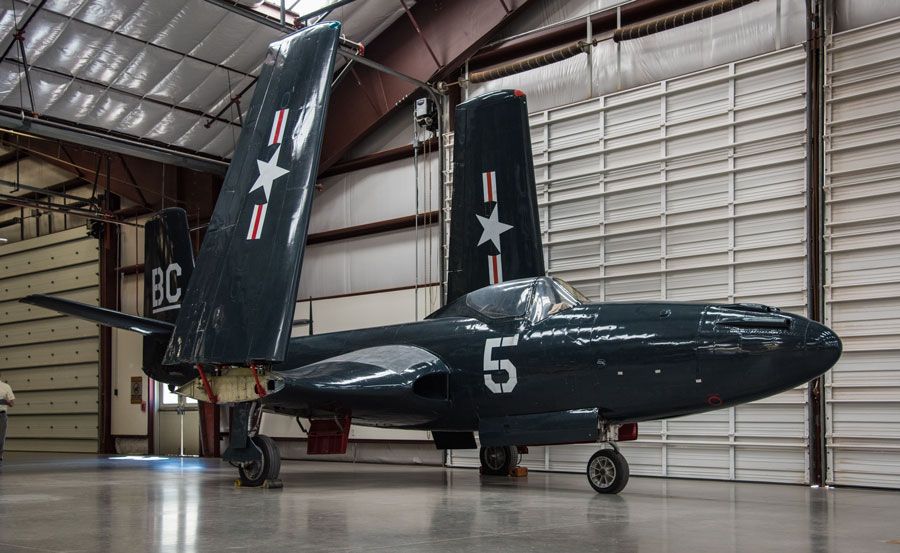McDonnell FH-1 Phantom
The McDonnell FH-1 Phantom was the United States Navy and Marine Corps first all jet fighter. In 1943 the Navy requested McDonnell Aircraft Company to design a carrier based jet fighter. The design and construction of the prototype took two years as the engineers worked through various performance requirements needed for carrier operations such as short take off ability and quick acceleration and deceleration. On July 21,1946 the second prototype took off and landed several times aboard the USS Franklin D. Roosevelt. This made the Phantom the first all jet aircraft to conduct carrier operations for the US Navy. A total of 60 production Phantoms were made. Production aircraft were armed with four .50 caliber machine guns in the nose and eight 5 inch rockets under the wings. In 1947 Navy Fighter Squadron VF-17A and Marine Fighter Squadron VMF-122 received Phantoms, making them the first Navy and Marine squadrons to operate jet aircraft. Due to the rapid evolution of jet engines and aircraft design, Phantoms were retired from front line service in 1949 and from the reserves in 1954 being replaced by the McDonnell F2H Banshee and the Grumman F9F Panther.
Service History:
Built by McDonnell Aircraft Company in St. Louis, Missouri and delivered to the Navy on October 23, 1947.
October 1947 To Marine Fighter Squadron 122 (VMF-122,) Marine Corps Air Station Cherry Point, North Carolina. VMF-122 was commanded by famed Marine ace and test pilot Lt. Colonel Marion Carl. VMF-122 was the first Marine Squadron to be assigned jets and also fielded the Marine Phantoms, the Marine Corps only jet powered aerial demonstration team. This aircraft stayed with the squadron into 1949.
Wingspan | 40 ft 9 in. |
Length | 38 ft 9 in. |
Height | 14 ft 2 in. |
Weight | 12,035 lbs (loaded) |
Maximum Speed | 479 MPH |
Service Ceiling | 34,500 ft |
Range | 770 miles |
Engines | Two Westinghouse J30-WE-20 turbojets with 1,600 pounds of thrust each |
Crew | 1 |
Manufacturer
McDonnell
Markings
Marine Fighter Squadron 122 (VMF-122,) Marine Corps Air Station Cherry Point, North Carolina, 1948
Designation
FH-1
Serial Number
111768
Circa 1959 Sold to Progressive Aero of Ft. Lauderdale, Florida for use as a civilian jet trainer. Registered as N4283A.
1966 Sold to Pinellas Bank and Trust, St. Petersburg, Florida.
September 1967 Sold to JKR Corporation, Akron, Ohio.
Circa 1969 Sold to W. C. Yarbrough, Marietta, Georgia.
April 1971 Traded to Marine Corps Air-Ground Museum, Quantico, Virginia.
Late 1980s Loaned to St. Louis Air Museum. Damaged in a flood of the Mississippi River.
Circa 1997 Loan transferred to the Wings of Eagles Discovery Center, Elmira, New York.
July 2016 Loaned to the Pima Air & Space Museum by the National Museum of the Marine Corps.
